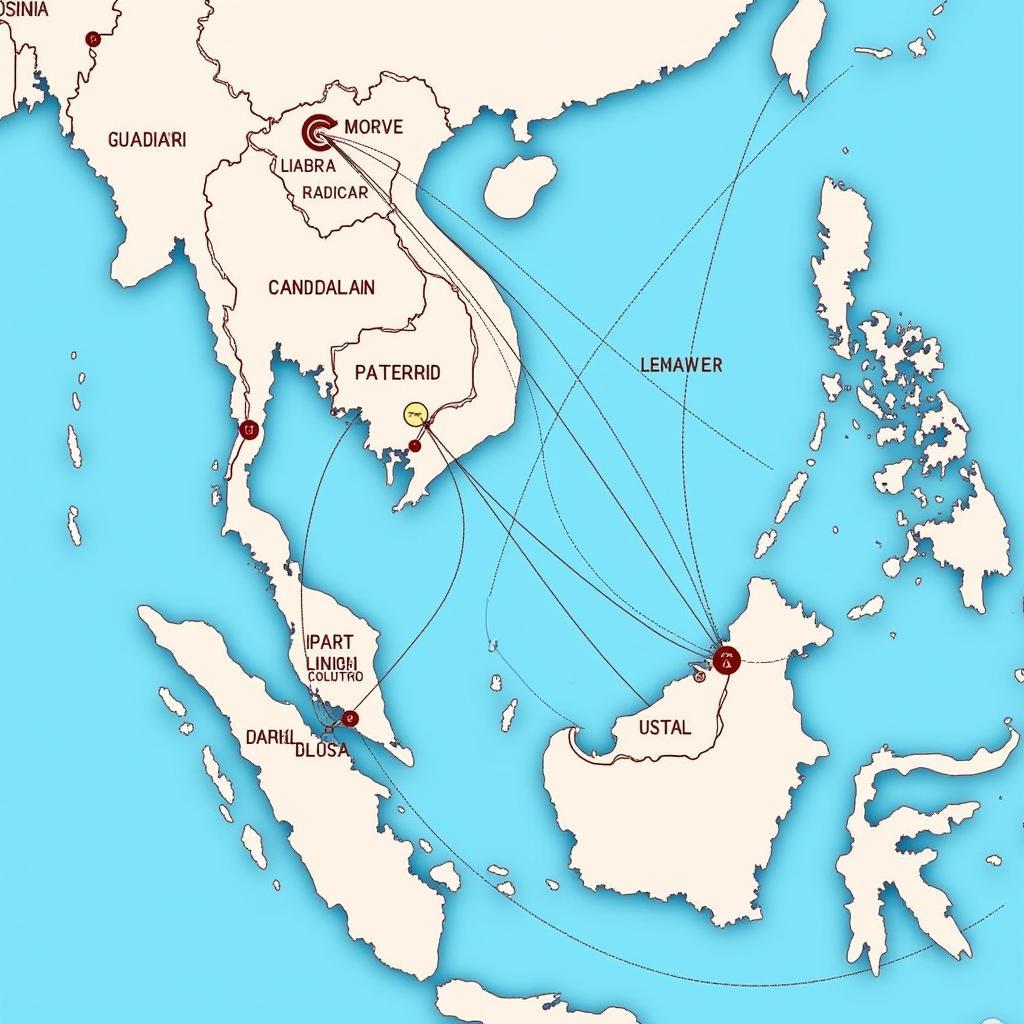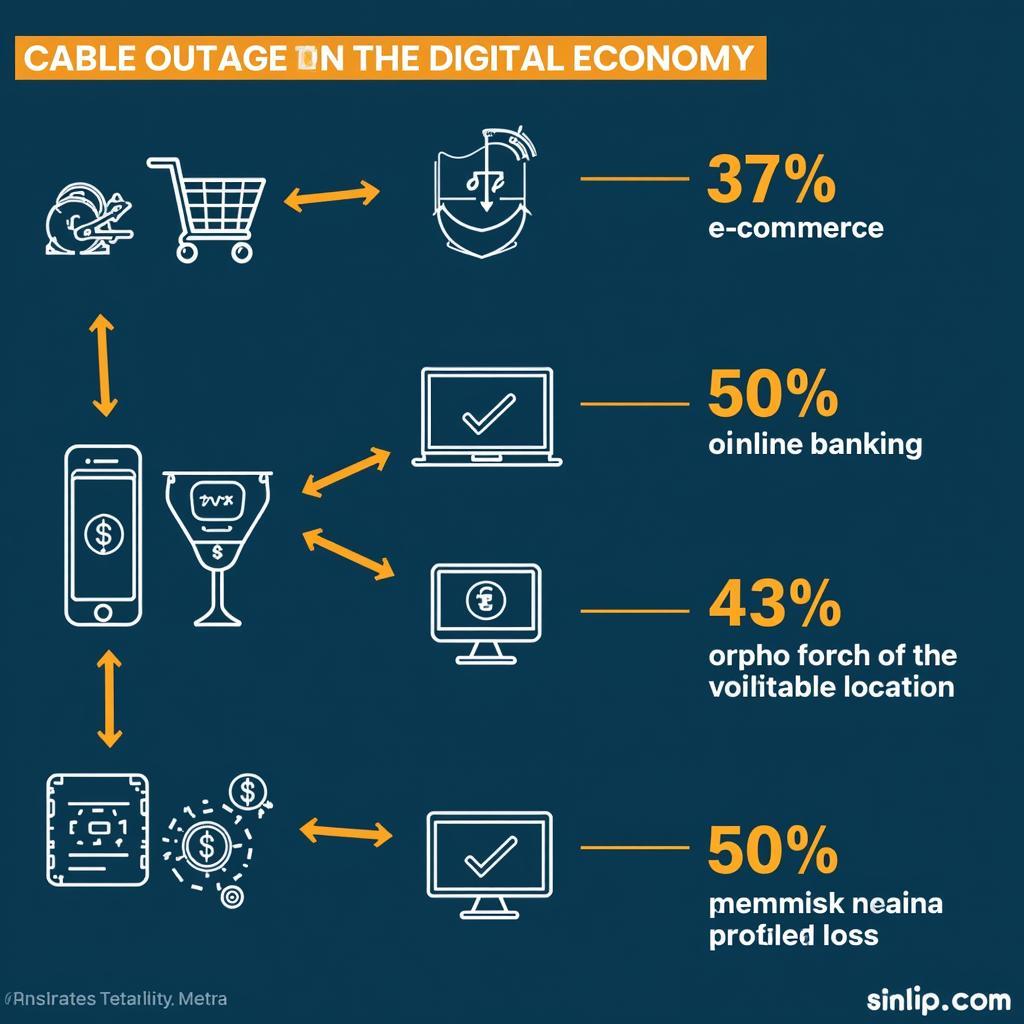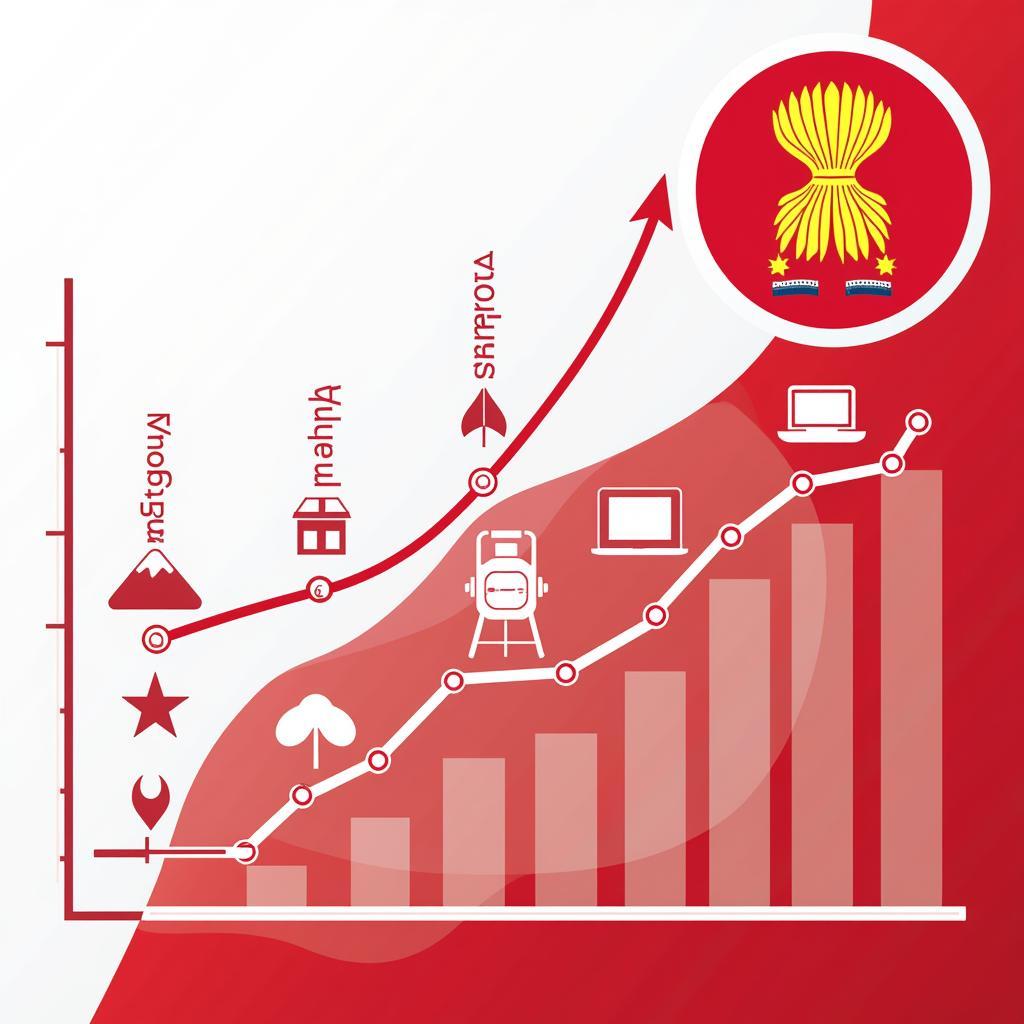A disrupted internet connection is a frustrating experience for anyone. But when an undersea cable cut plunges entire Southeast Asian nations into digital darkness, the consequences are far more severe. This is the reality faced by many ASEAN countries who rely heavily on a complex network of submarine cables for their internet connectivity.
The Vulnerability of ASEAN’s Digital Lifeline
ASEAN’s digital economy is booming, with online businesses, e-commerce, and digital services rapidly expanding. This growth is fueled by the internet, making reliable connectivity not just a convenience but an economic necessity. The region’s reliance on a complex and often fragile network of undersea cables, however, creates a significant point of vulnerability.
 Submarine Cable Map of Southeast Asia
Submarine Cable Map of Southeast Asia
These cables, often thousands of kilometers long, traverse treacherous ocean floors, susceptible to damage from earthquakes, ship anchors, and even fish bites. When a cable is cut, the impact is immediate and widespread.
The Ripple Effect: Economic and Social Consequences
An ASEAN cable cut doesn’t just mean slower internet or dropped video calls. The economic fallout can be significant. Businesses dependent on online transactions experience lost revenue, financial institutions face disruptions, and online services grind to a halt. The impact extends to education, healthcare, and even government functions that rely on stable internet access.
 Impact of Cable Cut on Digital Economy
Impact of Cable Cut on Digital Economy
Beyond the economic repercussions, cable cuts can also hinder social connectivity, limiting access to information, and impacting communication channels. In a region where social media plays a vital role in daily life, these disruptions can be particularly disruptive.
Building Resilience: Strategies for a More Robust Network
Recognizing the critical importance of internet stability, ASEAN nations are taking steps to mitigate the risks associated with cable cuts. These strategies include:
- Cable Route Diversity: Investing in new cable routes that follow different paths reduces the likelihood of multiple cables being damaged by a single event.
- Terrestrial Backups: Establishing robust terrestrial cable networks that can serve as a backup in case of undersea cable disruptions.
- Improved Monitoring and Repair: Implementing advanced monitoring systems to detect potential threats and deploying rapid response teams to expedite cable repairs.
- Regional Cooperation: Strengthening collaboration among ASEAN member states to share information, resources, and expertise related to cable protection and repair.
 Undersea Cable Repair Ship
Undersea Cable Repair Ship
The Future of ASEAN Connectivity: A Collective Effort
Ensuring a resilient and reliable internet infrastructure is a shared responsibility. Governments, telecommunications companies, and international organizations must work together to strengthen ASEAN’s digital lifeline.
Investing in robust cable infrastructure, implementing effective risk mitigation strategies, and fostering regional collaboration will pave the way for a more digitally connected and resilient ASEAN.

